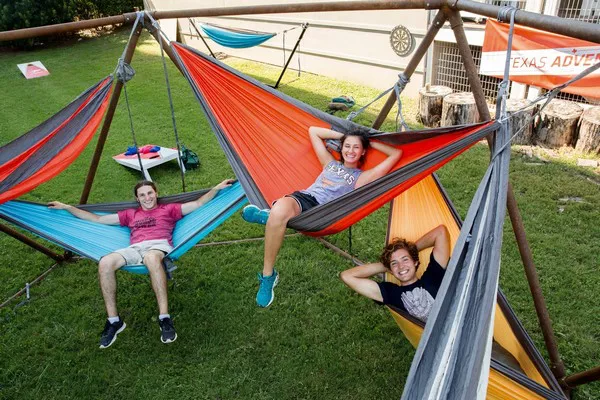Hammock camping has surged in popularity in recent years, offering outdoor enthusiasts a lightweight, comfortable, and versatile alternative to traditional tent camping. However, one of the primary requirements for hammock camping is, of course, trees. But what if you find yourself in a location devoid of suitable trees for hanging your hammock? Fear not, as innovative solutions and alternative methods exist to enable hammock camping even in treeless environments. In this comprehensive guide, we will explore various techniques and equipment options to help you enjoy the bliss of hammock camping regardless of the terrain.
Understanding the Challenge: Why Hammock Camping Without Trees?
Before delving into solutions, it’s crucial to understand the challenges posed by treeless environments for hammock camping. While trees provide sturdy anchors for hammocks, many outdoor areas, such as deserts, alpine regions, or beachfronts, may lack trees altogether or have insufficient tree coverage. Additionally, some campsites or backcountry locations may have regulations against hammock use on trees to protect the ecosystem. In such scenarios, alternative methods become essential for hammock campers to adapt and thrive.
1. Freestanding Hammock Stands
One of the most convenient solutions for hammock camping without trees is the use of freestanding hammock stands. These portable structures consist of sturdy metal frames that support the weight of the hammock, eliminating the need for trees or other anchors. Freestanding hammock stands offer versatility and can be set up on various terrains, including sand, rocky surfaces, or even indoors.
When selecting a freestanding hammock stand, consider factors such as weight capacity, stability in windy conditions, and ease of assembly. Many models are adjustable, allowing you to customize the height and tension of your hammock for optimal comfort. Additionally, some stands are designed for specific types of hammocks, so ensure compatibility before making a purchase.
2. Suspension Systems with Ground Anchors
For campers seeking a more lightweight and minimalist approach, suspension systems with ground anchors provide a viable alternative to traditional tree straps. These systems typically consist of adjustable straps or ropes equipped with stakes or anchors that can be securely fastened to the ground. While not as versatile as tree straps, ground anchors allow hammock campers to set up their shelter in open terrain where trees are scarce.
When using suspension systems with ground anchors, it’s essential to choose suitable anchor points and ensure they are firmly secured to prevent slippage or collapse. Look for durable materials and reliable stake designs that can withstand varying soil conditions, from soft sand to compacted earth. Additionally, consider carrying extra stakes or anchors in case of emergencies or challenging terrain.
3. Modular Hammock Tents
Another innovative solution for hammock camping in treeless environments is the emergence of modular hammock tents designed specifically for ground use. These hybrid shelters combine the comfort and convenience of hammocks with the stability and weather protection of traditional tents, making them ideal for diverse camping conditions.
Modular hammock tents typically feature a hammock-style sleeping platform suspended above the ground, supported by a lightweight frame or pole system. The tent body provides ample space for gear storage and protection from the elements, with options for mesh panels for ventilation and insect protection. Some models even include removable rainflys or tarps for added weather resistance.
When choosing a modular hammock tent, consider factors such as weight, packability, setup time, and overall durability. Look for models that offer easy assembly and versatile configuration options to adapt to different camping scenarios. Additionally, assess the level of comfort provided by the hammock sleeping platform and ensure it meets your preferences for sleeping posture and support.
4. Hammock Suspenders and Rock Straps
In environments where trees are scarce but rock formations or boulders are abundant, hammock suspenders and rock straps offer a creative solution for securing your hammock. Suspenders are adjustable straps that wrap around large rocks or boulders, providing stable anchor points for your hammock suspension system. Similarly, rock straps utilize webbing or cordage to secure your hammock to immovable objects such as cliffs or outcroppings.
When using hammock suspenders or rock straps, exercise caution and ensure that the anchor points are strong and secure enough to support your weight. Avoid placing undue stress on fragile or unstable rock formations, and always inspect anchor points for stability and safety before use. Additionally, consider carrying padding or protection for your hammock straps to prevent damage from sharp or abrasive surfaces.
Conclusion
While trees may be the traditional anchors for hammock camping, innovative solutions and alternative methods exist to enable outdoor enthusiasts to enjoy this beloved pastime in treeless environments. From freestanding hammock stands to modular hammock tents and creative suspension systems, there are options available to suit every camping style and terrain. By embracing adaptability and creativity, hammock campers can continue to explore and appreciate the great outdoors, regardless of the presence of trees.

